It has been the most physically demanding week of my life. Working for Habitat for Humanity in El Salvador this past week has worn me out every single day. It has been hot, tiring, sometimes mindless work. But I have gone to bed each night content. Feeling incredibly exhausted and incredibly blessed.
And it has taken everything I have to keep up with the amazing team from Arapaho.
This trip has pushed me outside my comfort zone and past my limits. I am bruised and sore and tired and aching. I am homesick and ready to be back in my own bed. I am spiritually conflicted--nourished by the connections I have made but saddened by the suffering that I have been exposed to.
It has been hard work, and now I can't wait to share my experiences--but I also need rest.
But that is what happens when we make love concrete.
Because one of the tasks of the church is to make the love of God concrete. I can think and reflect about what it means to be a beloved child of God but if I don't recognize my neighbor as my brother or sister than I have missed the point. I can talk about grace, but if I don't experience it, then it is hard for others to hear it, see it, taste it, and feel it. This week, besides mixing concrete and pouring it to make a foundation, we have made love concrete in the world.
We have worked our hearts out. Every single member of this amazing group of people has come together and become co-laborers. Not just with each other, and not just with the masons and family members working at the site.
They have become co-workers with God.
They have listened for the voice of God and said yes to the opportunity of going on this mission trip. They listened to the joyous sound of children laughing and welcoming them to the work sites. They listened to fellow team member's advice and encouragement. They listened to the maestros as they handed out instructions. They listened to the voice of God in the words of Oscar Romero--who gave his life for the image of God found on the poor and the oppressed.
They saw God in the smiles of the families who would soon have houses to live in. They saw God in the hard work they did. They saw God's pain on the wall listing the names of victims of El Salvador's civil war. They saw God in the vulnerability, patience, and gratitude of each other. And hopefully, they saw God in themselves.
Because they saw something else this week. They saw God's vision for the world. They saw God's vision for a future when all would live and laugh and love without worry about having adequate housing. They saw God's vision for a world of justice and mercy and love.
And this week, they worked with God and with each other toward making that vision a reality--they made love concrete.
And now, it is time to come home.
 Katy (pronounced COT-e), our Habitat El Salvador guide and translator, has lived in El Salvador her entire life. Within, one day of getting to know her, we discovered that many AUMC members had something in common with her: they all loved a game calledCandy Crush.
Want to get to know the cross-cultural game yourself? It's free on the App Store.
We have been so amazed by the kindness of the Salvadoran people.
Wednesday- Day 3 of Construction: Notes I can't speak for all of my teammates here, but I was excited about the idea of seeing a house built, and I was hoping to see at least some walls go up. It turns out that there is a lot of prep work that goes into getting a site ready. On the first day, team one dug our trenches, some of which were about three feet deep and more than a foot across (wet gooey clay in some areas). Day two, we finished up the trenches and realized there were more trenches to dig. By day three, I was hoping for concrete, but we were greeted with two giant piles of sand and another kind of sandy dirt, and we were told to start filling the trenches back in with this special dirt (20 cm or so of it).
We all took turns digging and using the pick axe to remove dirt from trenches while others became the regular wheelbarrow brigade. First, someone would use the pick axe or a giant hoe to break up the dirt, then someone would use a hoe and/or a shovel to get the dirt up out of the hole into a wheelbarrow. Then someone would move that wheelbarrow to the dirt pile away from the house, run up a ramp to get to the top of the dirt pile, dump it, and go back for more dirt. Ken, Ron, Mark, Jeff, Jack, Patrick, Bob, Shelby and others (including Don Hector and his son Jose who will live in the house) took turns getting the dirt out of the trenches. Beverly, Leigh, Cathy, Ann, Betsy and Bob, among others took turns with our three wheelbarrows making sure our trenches were kept cleaned out so we could dig more.
By day three, Jack, Patrick, and Shelby began working with our site boss on building the rebar that would go into the trenches to strengthen and hold together the concrete. Jeff and Bob worked a lot with the steel that needed cutting and bending for various applications, but they also took turns with the other big job- tamping. The dirt that was poured back into the trenches needed to be compacted, so we essentially walked around with giant heavy upside down Thor hammer type tools (see pictures) and pounded it down into a pancake. Even the women came over to help with tamping, and they worked hard. Nancy, Beverly and Leigh were all a little bit scary. Serious muscles there. Ron and Jeff just continued steadily working, tamping, digging, pick-axing, shoveling. They worked hard, but it was all widely accepted that the hardest worker was Shelby. That girl could shovel. Sometimes she was just a blur as she moved mountains of loose dirt into wheelbarrows.
Supposedly, the concrete will be poured into the trenches tomorrow (Thursday).
Team two worked down the street with a man named Don Alfredo. He needed a small mountain of dirt moved out of the front of his house from the recent completion of his Habitat home (thank you Greenland Hills!). He wanted to use the dirt to lay a new layer in his yard to make it level. Stuart, Marcia, Judy, Debbie, Betsy, and Mark were the usual players, and they took turns shoveling into buckets and moving them pumpkin-line style to Don Alfredo to redistribute. By day two his backyard looked amazing. Despite having reported back problems, he had moved some sand to cover the clay-like dirt so that when it rained it would no longer turn into a mud pit. Day two and three they even filled a lot of dirt into the ditches and the ruts in the road outside of his house.
I guess it can't all be done in one week, but we've been busy. We are all happy at the amount of work we've accomplished as a team. Oh, and did we mention that it's hot?
We've now spent three days working on houses in an area of Ahuachapan called Los Buenos. The AUMC contingent is working on two houses -- one that is just being started, and one that is essentially complete, but needs a few final touches.
We knew that the house that was going to be started from scratch was going to require lots of digging. Forget the power tools; this was going to be spade work. Figuring that the other house (a) would be easier, and (b) would need a translator, and also knowing that I'm a wuss, I volunteered for the other group.
We (anywhere between about 5 and 9 of us) are working on the house of don Alfredo Rincan. The work so far has been entirely a process of digging up dirt, moving it from point A to point B, then dumping in the appropriate spot. If you've ever helped unload pumpkins, you know the drill. Although definitely physical, it has been made that much easier by the active participation of don Alfredo and some other special helpers that have popped by.
The community is called Los Buenos because many of the people here have the surname Bueno. I understand that there are a total of about 5,000 people living there.
The roads are unpaved and narrow, barely wide enough for two vehicles to pass, but nobody can afford a car so traffic is not a problem.
There is no running water, in general. Instead, women and girls will go down to a well with a large jug balanced on their heads and bring enough for the day back to a holding tank. This can take several trips. To get running water requires paying both an initial fee to get connected to the water system and a monthly cost to get the actual water.
With no running water, there are no flush toilets. The Rincan family's new house has a toilet, but it is flushed by dumping a pan of water into the bowl. I have not yet encountered what those people without Habitat-built houses have to use.
The Rincan family still cooks outdoors, even with their finished house. This, I understand, is by choice.
But even with all the poverty, there are blessings. Don Alfredo is a pleasant man who works very hard alongside us, and sees our participation with him as a blessing. His wife, Reina, rules over the household (Reina is Spanish for "queen"), does the daily work, but is quick with a smile and a laugh.
Two daughters live at home -- Katy, 15, who wants to go to the university and study to be a nurse... or police. Iris, the youngest, is 8, and while naturally quite shy, was out helping us today in the bucket/pumpkin line, working as hard as anyone. There are four other daughters, two of which we've now met.
We regularly see people walking by as we work. Mothers going to the well or carrying children. Kids. Lots of kids. Every one of them has wide eyes and a beautiful smile.
On Monday, three little boys, Miguel, Roberto, and Miguel, came by to watch. Roberto is a first grader; the Miguels are in second. Perhaps no more than five minutes after they came by, Jack stopped by with his camera. My attempts to use Jack's camera are best not documented, but we were eventually able to get some very good pictures of the kids.
Roberto, the first grader, decided to help us on Monday, and he came back again on Tuesday. He carried his share of the load, quite literally, although he's just not big enough to be able to carry a bucket of dirt by the handle. He complained every time we didn't fill the bucket hard enough, never realizing that it was the adults who preferred lighter loads.
Don Alfredo, dona Reina, and several other adults have told us that we are blessings for being there and helping them. I guess that's true, but these people are themselves blessed. Perhaps not with material goods, but with a joy of life and an ethic for hard work that I can only aspire to. Getting to know them is a blessing to me.
-Stewart


Up to this point, our El Salvador trip has essentially been a cultural tour. We've seen the remnants of the war; we've been exposed to the poverty; we've grown to learn more about this unique culture that still values family, friendship, and community, much like ours.
We didn't talk much about what was coming, perhaps out of fear.
Then, it was Monday morning, and we took a bus to the edge of Ahuachapan. The roads were narrow, hilly, and far from the straight roads with intersections and stop lights we were used to. And then we turned onto an even bumpier dirt road. After a few more minutes of twists and turns smattered with small homesteads of various sizes and conditions, we arrived at our stop. Literally the bus stopped in the middle of the road with barely room for pedestrians on either side.
We then learned what exactly we would be doing. After meeting the family whose house we would be beginning, a polite but shy group of people led by Señor Hector, we met our site bosses and started working. There were actually two AUMC groups (along with a third group of non-AUMC persons) working on three projects all within a 30 second walk of each other. The first AUMC group was to start digging trenches for the concrete foundation of the new house while the second smaller group was assigned to help spruce up a house recently completed by Habitat El Salvador (this mostly involved moving a giant pile of dirt).
The digging and shoveling and pick axing were grueling and the hot sun and humidity did not help, but we were all amazed by how hard each of us was working. We functioned as living dirt-moving organisms and began to get to know the people we were working beside. It's been exhausting and incredible, and it has only been two days.
More pictures to follow. Wifi is a bit spotty, and there isn't a whole lot of down time.
A Journey to Ahuachapan
We said goodbye to the Hotel Marisco in the morning. (OK, the name's pretty close, and I couldn't resist. Look it up if you don't speak Spanish.)
The first stop was the Lutheran Church, where we arrived maybe half an hour early. We were quickly greeted by the pastor and the bishop's wife, and they worked out with Jack how he would be participating in the service.
The rest of the group congregated -- yeah, that's a pretty good thing to do in a church, I guess -- where our Habitat for Humanity leader Kathy would translate for them. Incidentally, Kathy is wonderful and deserves a blog post to herself.
I figured that I probably didn't need the translation help, so I decided to walk across the aisle and talk to one of the parishioners. Luis had been coming to this church for a long time and attended every Sunday. I talked with him as best I could, but between the traffic from the street -- they never did close the doors -- and Luis' manner of speech, I took a tip from my friend Russell Bohannon's bag of tricks and simply did a lot of nodding.
The service was in some ways what you might expect. Hymns, in Spanish, of course. Bible readings. I followed along, but I still have no idea which psalm they were reading. Jack read a passage from Luke in English. A sermon.
And did I mention that there was a sermon?
I guess it has ended by now. But while the pastor of this church shares many wonderful traits with Jack, brevity is not among them. I understood most of it, probably because he covered everything. And I mean everything.
Unlike at Arapaho, this church serves communion every Sunday. With wafers. And wine.
Ever wonder what happens to communion wine that isn't used? Jack didn't have to; he was well aware. I didn't see this personally (undoubtedly my low for the day), but Jack apparently was trying to hand off the chalice of red wine he was holding to someone, anyone. No luck. So, and I understand that this happened with a rather pained expression on his face, he did his pastoral duty and drank it.
It was not a small chalice.
We greeted the parishioners, much like we greet each other after Children's time at AUMC, and after the service, we were all presented wooden crosses, which were placed around our necks by the children of the congregation. In theory, at least; Mark Ellis either got a very small cross or has a very big head.
This was by no means a fancy service. The building was in obvious disrepair. There were neither hymnals nor bibles in the pews, and I understand that there weren't many books in the pastor's office.
Song lyrics were projected on a screen in the corner and we pretty much had to figure out the tunes. That they sang The Lord's Prayer to the tune of The Sound Of Silence was a bit of a surprise.
Luis told me that a typical service would have maybe 30 people, and, not counting our group, that's about how many were there. Still, even with all that, there was absolutely no question that this was a house of faith, and of God. And I wish them all the blessings in the world.
On the way out of San Salvador, we ate at Pollo Campero, a Central American fast food chicken chain. Yes, it's the same Pollo Campero you can find in Dallas, but they're far easier to find here in El Salvador. We continued through two archaeological sites, where Jack chased birds (yep, really!) and Bob Schneider and I played Fill In The Blanks whenever one of the guides came up with a word that Kathy didn't know how to translate.
By the time we got to Santa Ana, there were some very threatening clouds visible in the distance, and not long after we had passed through town, we found out how threatening. Think cats, dogs, various farm animals, maybe an ark in the distance, and you'll get the idea. Mass hysteria. And a lot of wind; I saw some felled tree branches.
The locals were clearly used to it; they took shelter, of course, unless they had somewhere to be. In the worst of the rain, we passed a lone pedestrian in a yellow raincoat walking alongside the road, likely thankful that we didn't drench him when we passed through a nearby puddle. Perhaps two or three minutes later, and I think I was the only one who saw this, we passed two more pedestrians in yellow raincoats.
One of them had a white cane.
It would be difficult enough for a blind person to walk along this busy highway under the best of circumstances. Heck, I wouldn't want to do it, period, and I can see (although my optometrist might choose to disagree). I can only speculate as to exactly what was happening, but perhaps I saw a prime example of loving one's neighbor as onesself?
Yeah, that sounds good. I'll stick to that.
We're at the inn now, after a dinner that consisted mainly of rubber chicken and a lot of laughs.
The adventure continues tomorrow.
-Stewart Huckaby
The rain beat against the bus as though it were a dinghy in the middle of rough seas. As hail fell on the roof, we noticed a man pushing his ice cream cart through a deep river of water that had formed. We gave thanks for the rain, gave thanks for the protection we had, and prayed for the safety of that faithful ice cream man.
Thunder announced the presence of this day’s storm earlier as we learned about the early Mayan culture of El Salvador—we saw the excavated ruins of an ancient village and the acropolis the people would have visited for religion, commerce, and politics. We learned about the later Spanish colonization—with indigo factories run by Dominican monks. We had walked to the top of a hill next to an uncovered acropolis, appreciated the beautiful ridges and crests of the surrounding mountains, and noticed the rainbows forming in front of the gathering thunderheads. At the time, I didn’t think anything of the clouds or the rain—having grown up in the tropics of Jakarta, I was used to the rainy season daily thunderstorm.
I wasn’t prepared for this storm.
Not just because of the awesome display of creation—of wind whipped trees dancing in the rain. Not just because of the terrifying possible consequences of such a storm on our bus as we traveled from San Salvador to Auachapan. No, I wasn’t prepared for this storm because of the ice cream man.
Our local guide from Habitat for Humanity, Caty, talked about an ice cream man she met the other day—while the rest of us were busy browsing souvenir stalls—a man who walks for several hours a day, pushing his cart, to earn around five dollars a day. The current minimum wage in El Salvador is around 230 dollars a month. This man faithfully and dutifully pushes his cart each day, so that he can earn almost a hundred dollars less than minimum wage—a minimum wage that is already lower than the cost of living.
I say all of this to call attention to the ice cream men we have encountered. Pushing their carts to feed their families—sometimes through intense storms—they embody sacrifice. If no one calls attention to their faithfulness, who will? My goal here is to honor and celebrate all those who do such work. They struggle against poverty, the elements, and the indifference of others to be a blessing to others. God bless the ice cream man.
Reflecting on this, I remember our visit to a Lutheran church this morning. It was an overwhelming experience—the bomb-scarred building itself a witness to the suffering and faith of the church of El Salvador. The smiles on the faces of the pastor and the people—the little girl who stole my heart as she gave me a cross necklace—were full of hospitality and grace. Outside, after the service, laughing children and youth lined up to get snow cones dripping in juice from fresh-squeezed limes.
Not exactly ice cream, but a blessing nonetheless.
Sunday morning (July 21).
We were scheduled to leave for church at 9:00- technically a Lutheran church, but one with a long history of helping the Salvadoran people and progressive theology.
Afterwards, we discussed our profound surprise at the conditions of the building in which these friendly and welcoming people worshipped. The service was great, though a bit long (ask us about the long sermon - all in Spanish of course). When they greet one another, they say, "La Paz," which means The Peace as in may peace be with you. The best part of the service was that Jack got to participate in the mass beside the Salvadoran father. After church, we ate lunch at a new favorite chicken restaurant for many, Pollo Campano (a Salvadoran or Guatemalan chain with locations in Dallas too). Then, on our way up into the mountains to the west, we stopped at two archaeological sites. The first, Joya de Cerén, was in some ways like a Central American version of Pompeii. Around 590 CE. A volcano erupted and covered an abandoned village in 14 feet of ash. It was fascinating imagining the lives of people who lived so long before us, but it was also really hot. :) From la Joya, we went to another archaeological site, this one of Mayan ruins. The museum, also hot and without much of a breeze, was thorough, and the views at the actual ruins were spectacular.
|

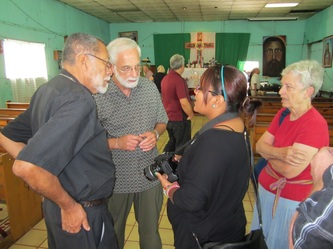

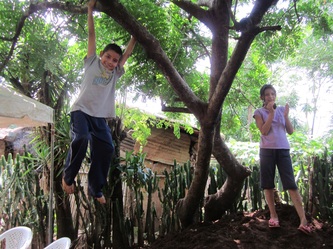
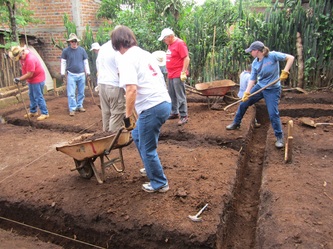



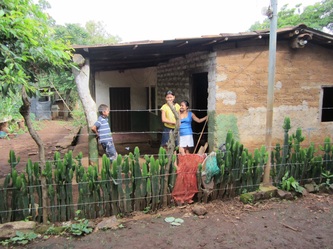

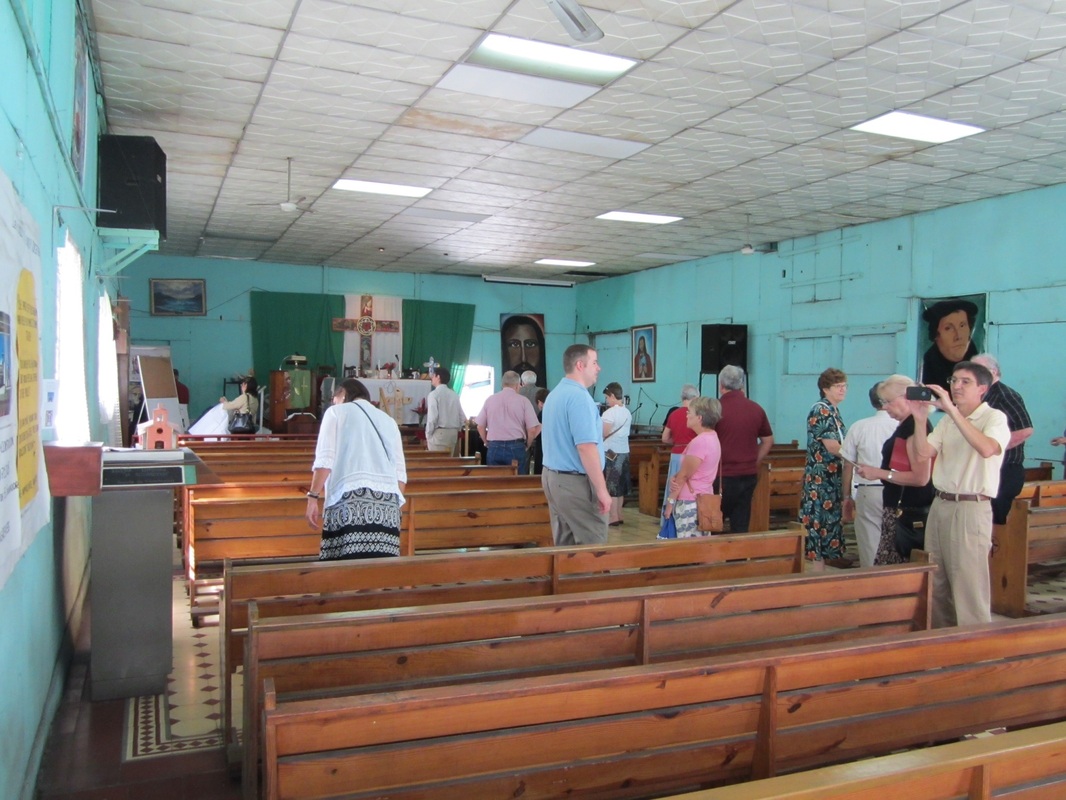
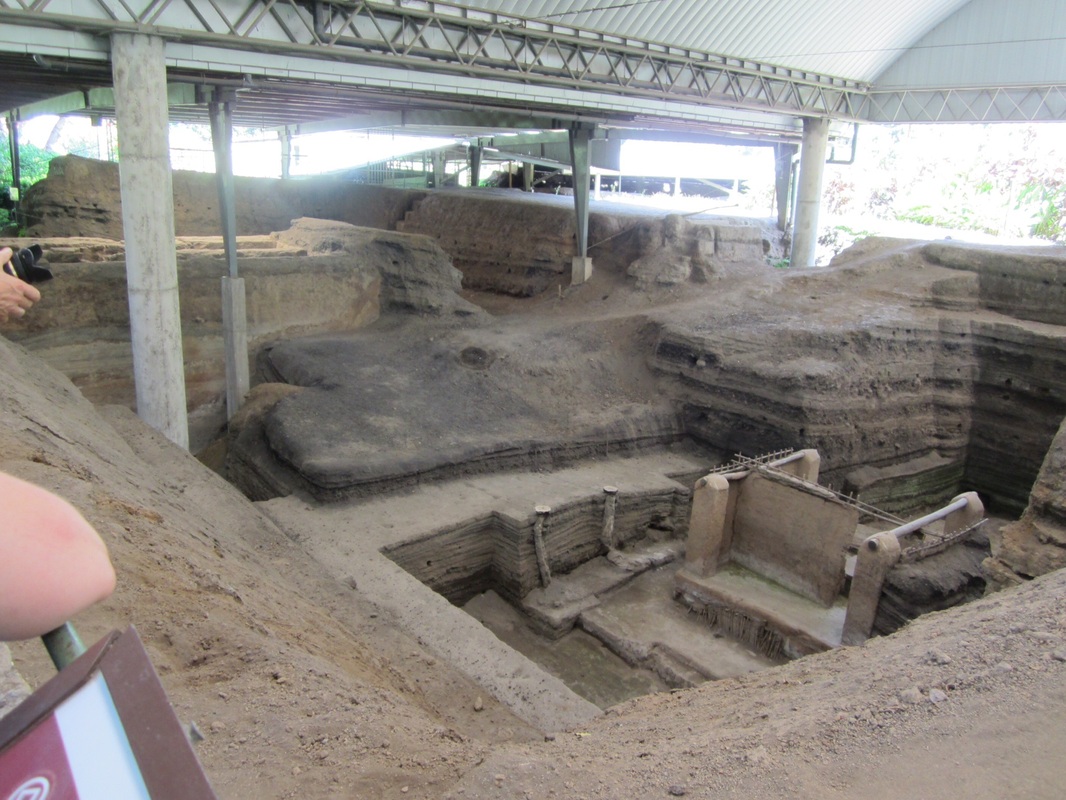



 RSS Feed
RSS Feed